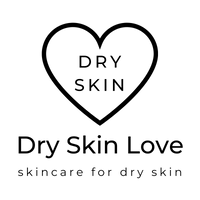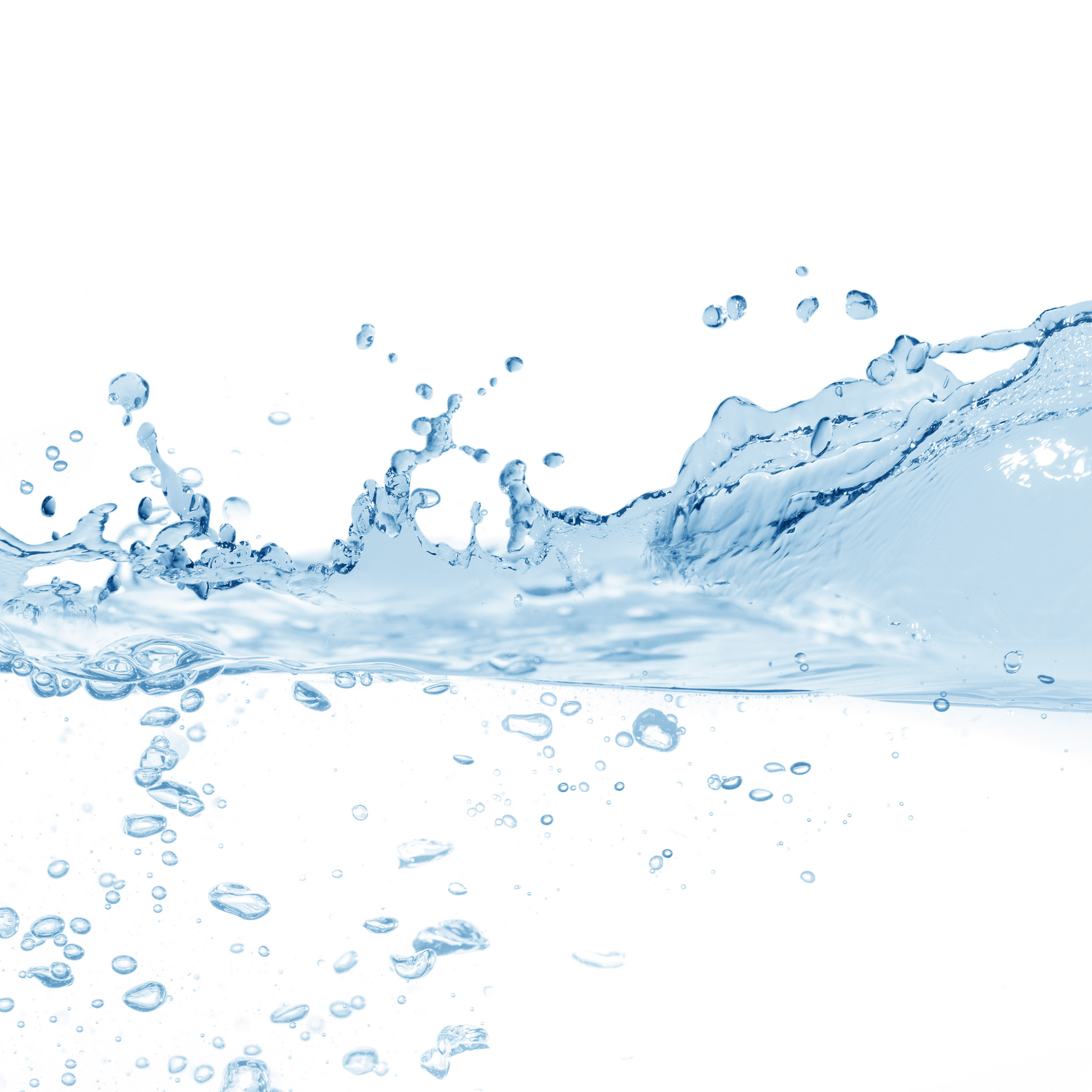The skin's moisture barrier is a crucial aspect of maintaining healthy and hydrated skin. It acts as a barrier, trapping and retaining water within the skin and preventing moisture loss.
In this blog post, we will dive deeper into what the skin's moisture barrier is, its composition, and the importance of maintaining a healthy moisture barrier.
Overview:
- What is the skin's moisture barrier?
- Normal skin hydration
- Water and skin cell turnover
- What are natural moisturizing factors (NMFs)?
- What is hyaluronic acid?
- What is glycerol?
- Summary
- References

What is the skin's moisture barrier?
The skin's moisture barrier is a part of your skin barrier.
The skin's moisture barrier ensures your skin is hydrated by trapping and holding water into your skin.
The skin's moisture barrier is composed of water, natural moisturizing factors (NMFs) and other humectants, such as glycerol and hyaluronic acid to attract and hold onto moisture.

Normal skin hydration
Water is essential for the normal functioning of the skin.
The water content of skin is remarkably high - the epidermis (the outer skin layer) contains more than 70% water, while its outermost layer, the stratum corneum has been shown to contain ~15 - 25% water (Warner et al, 1988; Caspers et al, 2001; Caspers et al, 2003).
- it maintains plasticity of the skin, protecting it from damage
- it contributes to optimum stratum corneum barrier function
- it allows hydrolytic enzymes to function in the process of desquamation
When the water content of the stratum corneum falls below 10%, scaling on the skin surface becomes visible (Rycroft, 1985).
The retention of water in the skin is dependent on:
- Natural moisturizing factors (NMFs) and other humectants (such as glycerol and hyaluronic acid) to attract and hold onto moisture
- Intercellular lipids (fats) that form a barrier to prevent transepidermal water loss (TEWL) (Verdier-Sévrain et al, 2007).

Water and skin cell turnover
Desquamation is the natural process of shedding skin cells.
New skin cells are formed at the base layer of the skin, and they differentiate and migrate towards the skin surface, in a process that takes approximately 4 weeks. Nearly a billion cells are lost each day from the surface of adult skin (Milstone et al, 2004).
One of the critical functions of water in the skin is to participate in hydrolytic enzymatic processes required for normal desquamation.
In other words - water is necessary for the enzymes to function properly.
If the skin water content falls below a critical level, the enzymatic function required for normal desquamation is impaired, leading to skin cells sticking and building up on the skin surface (Verdier-Sévrain et al, 2007).
These changes lead to the visible appearance of dryness, roughness, scaling, and flaking (Verdier-Sévrain et al, 2007).
Learn more: What is Dehydrated Skin?

What are natural moisturizing factors (NMFs)?
The role of the natural moisturizing factors is to maintain adequate skin hydration.
The outer skin layer is called the stratum corneum and it is made up of cells called corneocytes, which form the physical barrier of the skin.
Corneocytes are filled with keratin filaments as well as amino acids and other small molecules, collectively referred to as natural moisturizing factors (NMF), derived from the breakdown of filaggrin, a protein that surrounds the keratin filaments (Verdier-Sévrain et al, 2007).
Natural moisturizing factors are a mix of humectants or hydroscopic molecules that help attract and hold onto water and maintain hydration in the skin.
Natural moisturizing factors include amino acids and their derivatives (pyrrolidone carboxylic acid and urocanic acid) made from the breakdown of epidermal filaggrin. Other components found within but also external to the corneocytes include lactates, urea, and electrolytes (Table 1).
Natural moisturizing factors are present in high concentrations within corneocytes and represent up to 20% to 30% of the dry weight of the outer skin layer (Verdier-Sévrain et al, 2007).

What is hyaluronic acid?
Hyaluronic acid is a substance that occurs naturally in the body and is found in the skin, joints, and connective tissue. Hyaluronic acid is well known as one of the major components of the dermis, and is highly hygroscopic, meaning it can absorb moisture from the air.
Hyaluronic acid provides hydration and structural integrity to the dermis (Verdier-Sévrain et al, 2007).
In skincare, it is used for its powerful hydrating properties, as it can hold up to 1,000 times its weight in water. This makes it a popular ingredient in anti-aging skincare products, as it helps to reduce the appearance of fine lines and wrinkles by plumping and hydrating the skin.
Hyaluronic acid is a glycosaminoglycan (GAG) composed of disaccharides, which are molecules made up of two sugar units. Specifically, it is made up of a repeating sequence of two sugars: glucuronic acid and N-acetylglucosamine. The disaccharides are linked together by glycosidic bonds to form a long chain polymer.
The molecular weight of hyaluronic acid can vary, with some forms having a low molecular weight and others having a high molecular weight. Low molecular weight hyaluronic acid is able to penetrate the skin more easily and deeply, while high molecular weight hyaluronic acid stays on the surface of the skin, providing a more immediate plumping and hydrating effect.
There are different types of hyaluronic acid that can be used in skincare products. The main types include:
-
High molecular weight hyaluronic acid: This type of hyaluronic acid has a larger molecular weight, which means it stays on the surface of the skin and provides a more immediate plumping and hydrating effect. It helps to create a moisture barrier on the skin to prevent water loss.
-
Low molecular weight hyaluronic acid: This type of hyaluronic acid has a smaller molecular weight, which allows it to penetrate the skin more deeply. It can help to stimulate the production of collagen and elastin in the skin, leading to a more youthful and radiant complexion.
-
Cross-linked hyaluronic acid: This type of hyaluronic acid has been chemically modified to create a more stable structure. It is often used in dermal fillers to add volume and smooth out wrinkles.
-
Sodium hyaluronate: This is a salt form of hyaluronic acid that is more stable and has a smaller molecular weight, making it easier to penetrate the skin. It is often used in skincare products for its hydrating and plumping properties.
Overall, the type of hyaluronic acid used in skincare products will depend on the specific formulation and intended use of the product. Different types of hyaluronic acid can provide different benefits for the skin.

What is glycerol?
Glycerol is also known as glycerin.
The beneficial effects of glycerol on the skin have been recognized for over 75 years, and glycerol has been widely used as an ingredient of skincare formulations for its moisturizing and smoothing effects (Fluhr et al, 2008).
Interestingly, it has been shown that glycerol is made by our skin in the pilosebaceous unit and transported through aquaporin-3 (AQP3) channels to the skin.
Endogenous glycerol plays a role in skin hydration, cutaneous elasticity and epidermal barrier repair (Fluhr et al, 2008).

Summary
The skin's moisture barrier is an essential part of your skin barrier.
The skin's moisture barrier is composed of water, natural moisturizing factors (NMFs) and other humectants, such as glycerol and hyaluronic acid to attract and hold onto moisture.
The skin's moisture barrier ensures your skin is hydrated by trapping and holding water into your skin.
The skin's moisture barrier can be damaged by various factors such as dry winter weather, hot water, and excessive scrubbing. When the moisture barrier is compromised, it can lead to dry, flaky, and irritated skin. To maintain a healthy moisture barrier, it is important to avoid harsh skincare products, use gentle cleansers, and moisturize regularly.
Learn more: How To Protect Your Skin's Moisture Barrier

Do you want healthy skin?
Sign up for Dry Skin Love Newsletter below

References
Ananthapadmanabhan KP, Mukherjee S, Chandar P. Stratum corneum fatty acids: their critical role in preserving barrier integrity during cleansing. Int J Cosmet Sci. 2013 Aug;35(4):337-45.
Warner RR, Myers MC, Taylor DA. Electron probe analysis of human skin: determination of the water concentration profile. J Invest Dermatol 1988; 90: 218–24.
Caspers PJ, Lucassen GW, Carter EA et al. In vivo confocal Raman microspectroscopy of the skin: noninvasive determination of molecular concentration profiles. J Invest Dermatol 2001; 116:434– 42.
Caspers PJ, Lucassen GW, Puppels GJ. Combined in vivo confocal Raman spectroscopy and confocal microscopy of human skin. Biophys J 2003 July; 85: 572-80.
Fowler J. Understanding the Role of Natural Moisturizing Factor in Skin Hydration. Practical Dermatology. 2012; July. 36-40.
Rycroft RJ. Low humidity and microtrauma. Am J Ind Med 1985; 8:371–3.
Verdier-Sévrain S, Bonté F. Skin hydration: a review on its molecular mechanisms. J Cosmet Dermatol. 2007 Jun;6(2):75-82.
Milstone LM. Epidermal desquamation. J Dermatol Sci. 2004 Dec;36(3):131-40.
Fluhr JW, Darlenski R, Surber C. Glycerol and the skin: holistic approach to its origin and functions. Br J Dermatol. 2008.
Author Information

Dr. Natasha Ryz is a scientist, skin care expert and an entrepreneur. She is the founder of Dry Skin Love Skincare, and she creates skincare products for beauty, dry skin and pain relief.
Dr. Ryz has a PhD in Experimental Medicine from the University of British Columbia in Vancouver, and she is a Vanier scholar. She also holds a Master of Science degree and a Bachelor of Science degree from the University of Manitoba in Winnipeg.
Natasha is the former Chief Science Officer of Zenabis Global, and she oversaw cannabis extraction, analytics, and product development. Her team brought 20 products to market including oils, sprays, vapes and softgels.
Why I Started A Skincare Company


